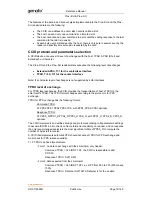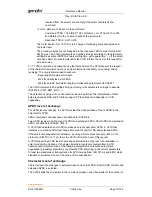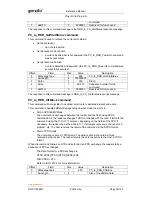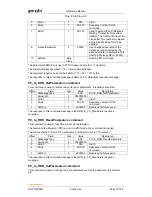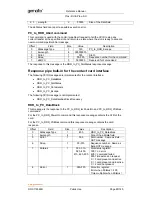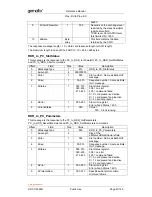
Reference Manual
Prox–DU & Prox–SU
www.gemalto.com
DOC118569D
Public Use
Page 66/145
XX
XX
…
..
Tk
N UU TCK
Check character (Conditional): Exclusive-OR of
bytes T0 to Tk
Table 19 – ATR for contact smart cards
Structures and content
A reset operation results in the answer from the smart card consisting of the initial character
TS followed by at most 32 characters in the following order:
•
T0
Format character (Mandatory)
•
TAi, TBi, TCi, TDi Interface characters (Optional)
•
T1, T2, ... ,TK
Historical characters (Optional)
•
TCK
Check character (Conditional)
The interface characters specify physical parameters of the integrated circuit in the smart
card and logical characteristics of the subsequent exchange protocol.
The historical characters designate general information, for example, the smart card
manufacturer, the chip inserted in the smart card, the masked ROM in the chip, the state of
the life of the smart card. The specification of the historical characters falls outside the
scope of this part of ISO7816.
For simplicity, T0, TAi, ... ,TCK will designate the bytes as well as the characters in which
they are contained.
Structure of the subsequent characters in the ATR
The initial character TS is followed by a variable number of subsequent characters in the
following order: The format character T0 and, optionally the interface characters TAi, TBi,
TCi, TDi and the historical characters T1, T2, ... , TK and conditionally, the check character
TCK.
The presence of the interface characters is indicated by a bit map technique explained
below.
The presence of the historical characters is indicated by the number of bytes as specified in
the format character defined below.
The presence of the check character TCK depends on the protocol type(s) as defined as
below.
Format character T0
The T0 character contains two parts:
•
The most significant half byte (b4, b5, b5, b7) is named Y1 and indicates with a
logic level ONE the presence of subsequent characters TA1, TB1, TC1, TD1
respectively.
•
The least significant half byte (b3 to b0) is named K and indicates the number (0 to
15) of historical characters.
b7 b6 b5 b4 b3 b2 b2 b0
Summary of Contents for Prox-DU
Page 4: ......





















